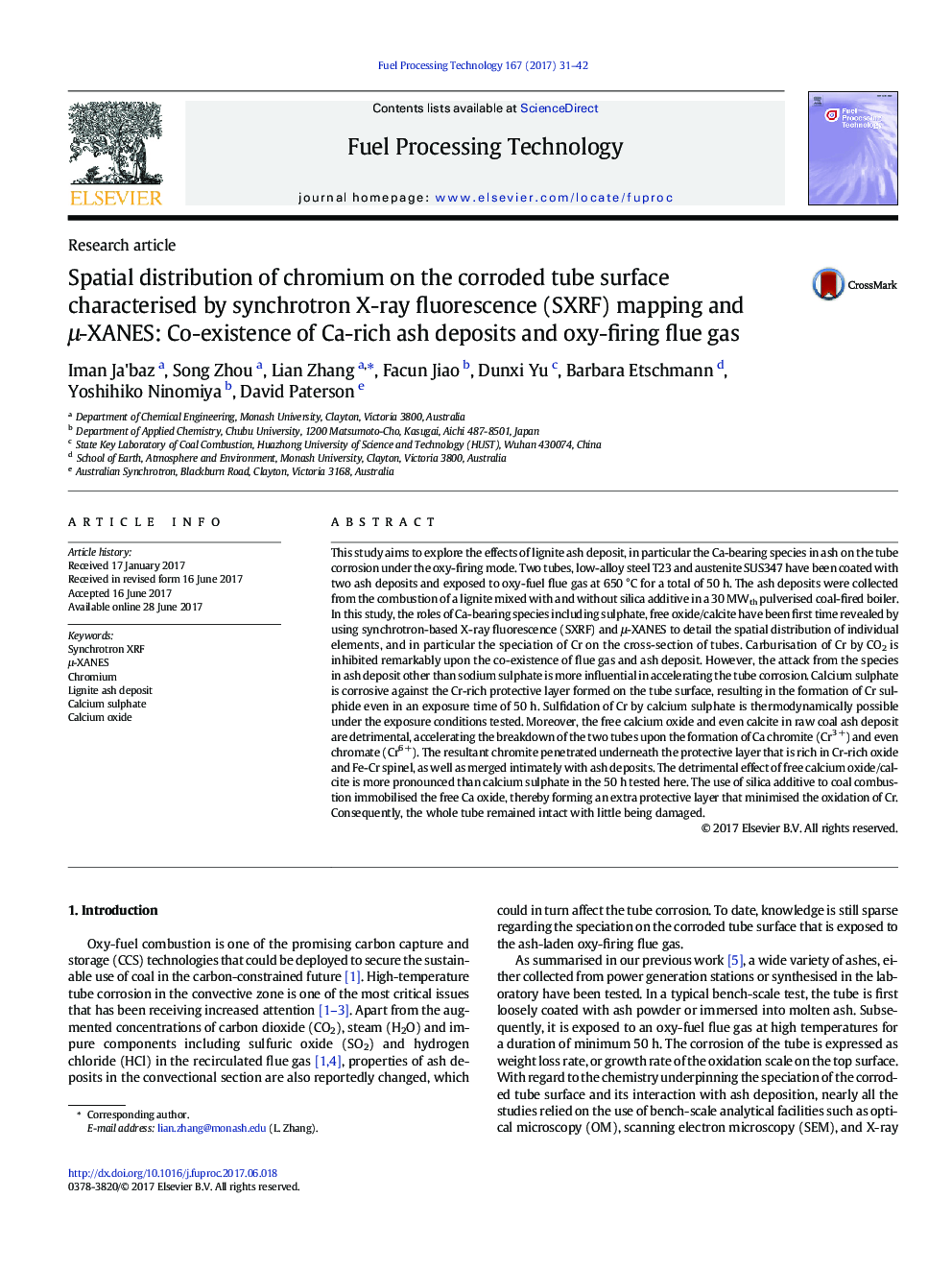| کد مقاله | کد نشریه | سال انتشار | مقاله انگلیسی | نسخه تمام متن |
|---|---|---|---|---|
| 6476222 | 1425379 | 2017 | 12 صفحه PDF | دانلود رایگان |

- Carburisation by CO2 is inhibited by ash deposit.
- Calcium sulphate is corrosive against the Cr-rich layer;
- Free Ca oxide is detrimental on tube corrosion.
This study aims to explore the effects of lignite ash deposit, in particular the Ca-bearing species in ash on the tube corrosion under the oxy-firing mode. Two tubes, low-alloy steel T23 and austenite SUS347 have been coated with two ash deposits and exposed to oxy-fuel flue gas at 650 °C for a total of 50 h. The ash deposits were collected from the combustion of a lignite mixed with and without silica additive in a 30 MWth pulverised coal-fired boiler. In this study, the roles of Ca-bearing species including sulphate, free oxide/calcite have been first time revealed by using synchrotron-based X-ray fluorescence (SXRF) and μ-XANES to detail the spatial distribution of individual elements, and in particular the speciation of Cr on the cross-section of tubes. Carburisation of Cr by CO2 is inhibited remarkably upon the co-existence of flue gas and ash deposit. However, the attack from the species in ash deposit other than sodium sulphate is more influential in accelerating the tube corrosion. Calcium sulphate is corrosive against the Cr-rich protective layer formed on the tube surface, resulting in the formation of Cr sulphide even in an exposure time of 50 h. Sulfidation of Cr by calcium sulphate is thermodynamically possible under the exposure conditions tested. Moreover, the free calcium oxide and even calcite in raw coal ash deposit are detrimental, accelerating the breakdown of the two tubes upon the formation of Ca chromite (Cr3 +) and even chromate (Cr6 +). The resultant chromite penetrated underneath the protective layer that is rich in Cr-rich oxide and Fe-Cr spinel, as well as merged intimately with ash deposits. The detrimental effect of free calcium oxide/calcite is more pronounced than calcium sulphate in the 50 h tested here. The use of silica additive to coal combustion immobilised the free Ca oxide, thereby forming an extra protective layer that minimised the oxidation of Cr. Consequently, the whole tube remained intact with little being damaged.
224
Journal: Fuel Processing Technology - Volume 167, 1 December 2017, Pages 31-42